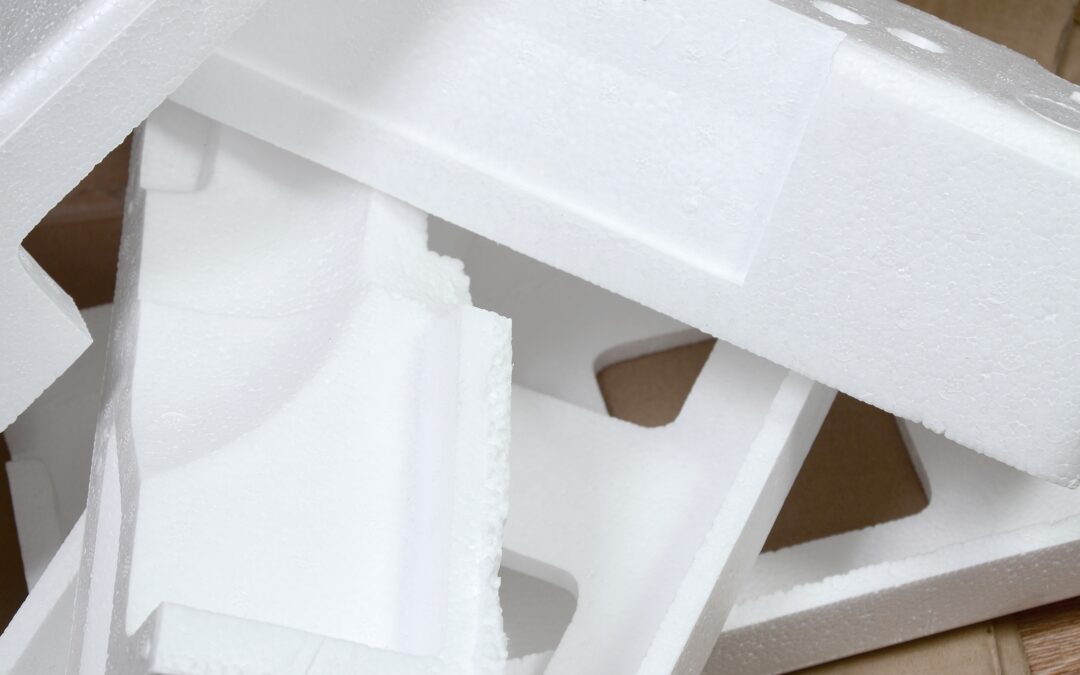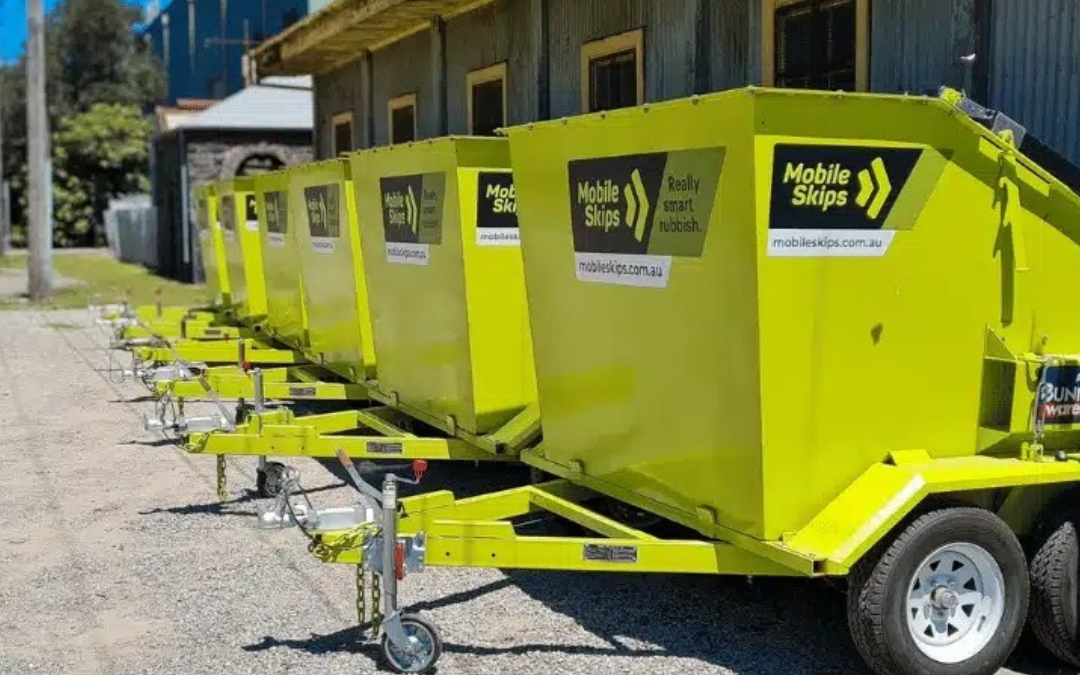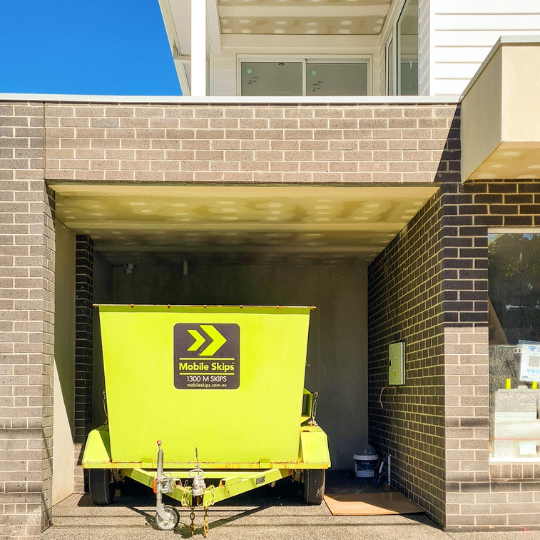Why Proper Flooring and Carpet Removal Is Important
Flooring and carpet removals is often one of the first steps in a home renovation project. Doing it right not only ensures a smooth renovation process but also prevents damage to the subfloor and saves time when installing new materials. By following the best practices, you can minimize disruption and manage waste more effectively.
Proper preparation is crucial for a smooth flooring and carpet removal process. Preparing your tools, such as a utility knife, pliers, gloves, dust mask, and safety goggles, is essential. This helps create a safe and productive working area.
Removing your old carpet yourself before hiring a professional can save you money on labor fees.
Ensuring proper waste management during your renovation project is also vital. Using a skip bin for disposing of old flooring and carpet ensures that debris is removed quickly and efficiently, allowing you to focus on installing new materials.
Wearing appropriate safety gear such as gloves, masks, and safety goggles during carpet removal is important due to the dust and small debris released, which can pose health risks (Dumpsters.com).
Sustainability is a growing concern, especially with carpet disposal. Carpets contain over 44 toxic chemicals and can take years to decompose in landfills. Opting for recycling initiatives can help divert waste from landfills and promote environmental health.
For more advice on waste removal during a home renovation project, explore our articles on home renovation waste and demolition waste.
Preparing for Flooring and Carpet Removal
Proper preparation is crucial for a smooth carpet and flooring removal process. By starting with the right tools and clearing the area, you can ensure a safe and efficient renovation project.
Gather the Right Tools
Essential tools for this job ensure that you can tackle the removal process efficiently and safely (DustRam). Here’s what you’ll need:
What You Need
- Utility knife
- Pry bar
- Hammer
- Pliers
- Safety equipment (gloves, dust mask, safety goggles, knee pads)
Tip
Investing in these tools, which typically cost less than $150 in total (Bin There Dump That), can help you safely and efficiently remove your old carpet and flooring before installing new materials. Prioritize safety by wearing heavy-duty work gloves, safety goggles, knee pads, and a dust mask to prevent injuries, cuts, punctures, and inhalation of dust and allergens. For additional details on related projects, check out diy renovation projects.
Clear the Area
An essential step in your preparation is creating a clear working space. This involves removing all items that could interfere with the removal process or be damaged.
What to Do
Remove all furniture, appliances, and fixtures from the room. Ensuring an empty space makes it safer and easier to carry out the work. This is a standard practice recommended for various renovation tasks (Construction Fasteners and Tools).
Tip
Clearing the area before you start avoids damage to your belongings and ensures you have ample space to work safely. This preparation also helps manage the waste more effectively, making it easier to move pieces to your skip bin for renovation waste. Consider also organising your space for efficient waste removal. For more efficient planning, visit home renovation waste.
Using the correct preparation steps ensures that your flooring and carpet removal process is efficient and safe. Proper disposal methods, such as using skip bins, can help keep your work area clean. For guidance on disposing of renovation waste, check out removing renovation waste.
Best Practices for Removing Flooring
Removing old flooring is an essential step in your home renovation project. Properly following best practices ensures a smooth process and prevents damage to the subfloor, saving you time when installing new materials. Here are the best practices for removing different types of flooring.
Removing Hardwood, Laminate, or Tile Flooring
Hardwood and Laminate
To remove hardwood or laminate flooring:
- Use a pry bar and hammer to carefully lift the boards. Start at one end of the room and gradually work your way across.
- Pry up each board gently to avoid damaging the subfloor beneath.
Tile
For tile removal:
- Start by breaking one tile with a hammer and chisel.
- Continue working your way across the floor, breaking and lifting each tile as you go.
- To make space management easier, stack tiles and boards carefully to optimize space in your skip bin and keep your workspace clean.
| Flooring Type | Tools Needed | Key Tip |
|---|---|---|
| Hardwood | Pry bar, hammer | Work gently to avoid subfloor damage |
| Laminate | Pry bar, hammer | Be cautious around delicate areas |
| Tile | Hammer, chisel | Stack debris to save space |
Dealing with Subfloor Adhesive or Underlayment
Subfloor preparation is crucial for a successful new floor installation. This usually involves removing stubborn glues, staples, or underlayment.
What It Involves
- Use a scraper or adhesive remover to get rid of any stubborn glue or adhesive left on the subfloor.
- If there are staples or other fasteners, employ pliers or a similar tool to remove them.
Tip
- Focus on completely cleaning the subfloor to ensure a smooth surface for the new flooring material. You can use a strong adhesive remover for tough glues or a heat gun to soften them first.
For further advice on waste disposal during renovations, check out our articles on home renovation waste and kitchen renovation waste.
Best Practices for Carpet Removal
Cut Carpet into Manageable Pieces
Why It Helps: Cutting the carpet into strips makes it easier to handle and dispose of.
Removing carpet can be a daunting task, but breaking it down into smaller, manageable pieces simplifies the process. By cutting the carpet into strips approximately 2 feet wide with a utility knife, handling and disposing of the carpet becomes much easier.
Tip: Use a utility knife to cut the carpet into strips approximately 2 feet wide, then roll up each section for easy removal.
Remove Carpet Tack Strips and Padding
What It Involves: Carefully lift carpet tack strips and padding using a pry bar and pliers.
After cutting the carpet, lift the tack strips and padding using a pry bar and pliers. This step requires care to avoid damaging the subfloor or injuring yourself on sharp nails. Carpets are typically either glued down or tacked. Tack strips, if not removed properly, can cause significant damage to the subfloor.
Tip: Take care when removing tack strips to avoid damaging the subfloor or injuring yourself on sharp nails.
Dispose of Staples and Nails Properly
Why It Matters: Old staples and nails left behind can cause issues with new flooring installation.
Removing all staples and nails is crucial to prepare the floor for new installation. These remnants can interfere with or damage new flooring. Ensure that you dispose of staples and nails properly to avoid injury and prevent damage to the skip bin.
Tip: Remove all staples and nails and dispose of them in a separate container to avoid injury or damage to the skip bin.
Using the proper tools like utility knives, pliers, and adhesive remover, as well as safety equipment such as knee pads, gloves, and dust masks, is essential for efficient and safe carpet removal.
Keep in mind the importance of managing waste during your renovation. Consider using Mobile Skips for easy disposal and efficient space management. Check other articles on home renovation waste and sustainable waste removal for comprehensive guidance.
Managing Flooring and Carpet Waste
Proper waste management is essential once you have completed flooring and carpet removals. Ensuring that you dispose of your old materials correctly can make a significant impact on the efficiency and environmental impact of your project.
Use Mobile Skips for Easy Disposal
Mobile Skips are a convenient and efficient option for disposing of various types of renovation waste, including flooring and carpet materials. According to Mobile Skips, these bins accept building rubbish such as plaster, timber, carpet, steel, and other construction debris.
What Can Go in the Skip:
- Old carpet
- Flooring
- Underlay
- Padding
- Tack strips
Tip: Stack the waste efficiently in your skip bin to save space, especially if you’re disposing of both carpet and flooring debris.
A 4 cubic meter Mobile Skip is sufficient for most small projects, making it ideal for your home renovation needs. For further information on managing waste removal for home renovation waste, check out our detailed guide.
Separate Recyclable Materials
Separating recyclable materials from general waste not only helps the environment but also ensures that products like wood flooring and underlay get a second life. Nearly all types of carpet are recyclable and can be broken down into fibers or plastic pellets for reuse in new carpet and construction products.
Recyclable Items:
- Wood flooring
- Underlay
- Carpet padding
Tip: Separate recyclable materials like wood and underlay to make sure they’re properly recycled, reducing your environmental impact.
By using Mobile Skips, you contribute to a more sustainable renovation project. The company ensures that all skips are sorted upon return to the depot, with rubbish transported to registered recycling centers, diverting over 7,000,000 kg per year away from landfill sites (Mobile Skips). For more tips on sustainable waste removal, visit our section on sustainable waste removal.
Utilizing these best practices can make your flooring and carpet removal project more efficient and environmentally friendly. Whether you’re tackling a bathroom renovation or a kitchen renovation, proper waste disposal is key to a successful home renovation journey.
When Mobile Skips Might Not Be Suitable for Your Project
Large Quantities of Heavy Flooring Materials
What It Includes: Excessive amounts of tiles, concrete, or heavy stone flooring
For projects involving large quantities of heavy flooring materials such as tiles, concrete, or stone, you might find that Mobile Skips are not the best option. The Heavy Skip from Mobile Skips can handle up to 1000kg, but this may not be sufficient for substantial quantities of these dense materials (Mobile Skips).
| Skip Bin Type | Weight Capacity | Suitable for |
|---|---|---|
| Standard Skip Bin | 500kg | Light to medium waste |
| Heavy Skip Bin | 1000kg | Up to 5 wheelbarrows of heavy waste |
For more than 5 wheelbarrows of heavy materials, a larger skip bin would be more appropriate. This consideration is crucial to prevent overloading and to ensure safe and efficient waste disposal.
Why It Matters: Mobile Skips are ideal for light to medium waste, but for heavier materials like tiles or concrete, a larger skip bin may be necessary.
Mobile Skips are designed to be highly versatile and convenient, but they do have limitations when it comes to handling extremely heavy waste. Overloading a Mobile Skip can lead to practical and safety issues, making your renovation project more challenging (Mobile Skips).
Tip: For projects involving large amounts of heavy materials, consider using a heavy-duty skip bin designed to handle the weight.
If your renovation involves a significant amount of heavy flooring materials, opt for a heavy-duty skip bin to manage the weight effectively. These bins are built to accommodate heavier loads, ensuring that your home renovation waste is disposed of safely and efficiently.
For more details on handling different types of renovation waste, including kitchen renovation waste and bathroom renovation waste, explore our comprehensive guides.
Safety Tips for Flooring and Carpet Removal
Proper safety measures are essential when undertaking flooring and carpet removals. These tips will help you carry out the process safely and efficiently.
Wear Protective Gear
Why It’s Important: Dust, sharp tools, and debris can pose safety risks.
During the removal process, you’ll encounter dust, sharp nails, and other debris. Dust and small particles released can pose health risks (Dumpsters.com). The correct protective gear helps mitigate these risks and ensures a safe working environment.
Tip: Always wear gloves, eye protection, and a dust mask to protect yourself during removal.
Before you start, gather the necessary safety equipment such as gloves, eye protection, and a dust mask. Also, using knee pads can add comfort and prevent injuries during this physically demanding task.
Be Cautious Around Nails and Tack Strips
Why It’s Important: Sharp nails and tack strips can cause injury if not handled properly.
Sharp objects like nails and tack strips present a risk of injury. Tack strips can be especially hazardous if not removed with care.
| Tool | Purpose |
|---|---|
| Utility Knife | Cutting carpet into strips |
| Pliers | Removing nails and tack strips |
| Pry Bar | Lifting boards and tack strips |
Tip: Use pliers to remove nails and tack strips carefully, and dispose of them in a separate, safe container.
Utilize pliers to carefully extract nails and lift tack strips without damaging the subfloor or injuring yourself. Always dispose of sharp objects in a separate container to avoid injury or damage to your skip bin.
Following these safety tips will aid in a smooth and safe home renovation waste removal process. For more advice, visit our removal tips section.
One Last Tip: Time Your Waste Removal Wisely
Flooring and carpet removal can generate significant debris, so it’s important to schedule waste removal at the right time.
Pro Tip: Book your Mobile Skip in advance to ensure it arrives when you’re ready to start removal. This will keep your workspace clean and organized, helping you move on to the next phase of your renovation without delay. (Mobile Skips)
When dealing with a home renovation project involving flooring and carpet removals, it’s essential to manage the waste correctly and efficiently. Removing old flooring and carpet can quickly produce a large amount of debris. This debris needs to be disposed of promptly to maintain a safe and functional workspace.
Using a Mobile Skip can make this process much smoother. Below is a helpful table outlining the typical waste types you’ll encounter during flooring and carpet removal, and which can be accommodated by a Mobile Skip:
| Type of Waste | Suitable for Mobile Skip? |
|---|---|
| Old Carpet | Yes |
| Carpet Padding | Yes |
| Wood Flooring | Yes |
| Tile Debris | Yes |
| Underlayment | Yes |
| Heavy Stone Flooring | No |
For projects involving extensive debris, such as heavy stone or large quantities of tiles, consider opting for a larger skip bin designed to handle the weight. For more details on managing such waste, check our guide on home renovation waste.
Booking your skip bin in advance ensures that it will be available when you need it. This is crucial because timing your waste removal effectively can significantly reduce disruptions during your renovation project. Keeping the workspace clear of debris not only makes the job safer but also allows you to move quickly to the next phase of your renovation without delay.
For more advice on managing specific types of renovation waste, including kitchen renovation waste and bathroom renovation waste, visit our detailed articles.
Following this tip, along with other best practices, will help ensure that your DIY renovation projects are completed efficiently and safely.
Final Thoughts on Flooring and Carpet Removal for Renovations
Flooring and carpet removal is a key part of most home renovations, and following best practices will make the process smoother, safer, and more efficient. Using Mobile Skips for waste disposal ensures that old flooring and carpet are removed quickly, so you can focus on installing your new materials and completing your project with ease.
Replacing your flooring is a valuable project that can significantly enhance your home’s value. Professional carpet removal for a 500 square foot area can range from $200 to over $500, in addition to the costs of new flooring and installation. Conducting the removal process efficiently can save you both time and money.
Nearly all types of carpet are recyclable. Recycled carpets can be broken down into fibers or plastic pellets for reuse in new carpet and construction products. Carpet recycling services are available through the Carpet America Recovery Effort (CARE)’s carpet reclamation map. Opting for environmentally sustainable solutions when disposing of old carpets reduces the environmental impact.
Mobile Skips partners with leading waste management companies in Australia to responsibly manage and recycle waste, including carpets. Emphasizing environmental sustainability, they ensure that waste from skip bins is recycled whenever possible (Mobile Skips). For more information on sustainable waste management, browse our article on sustainable waste removal.
Using Mobile Skips for your home renovation waste ensures a hassle-free and efficient disposal process. Their mobile skips are convenient for managing renovation waste including old carpet, flooring debris, underlay, padding, and tack strips. Efficiently managing your renovation waste not only maintains a clean workspace but also keeps your project on track.
Check out related articles on renovation waste, bathroom renovation, and home landscaping for more tips and best practices to make your home improvement projects seamless.
By following these best practices for flooring and carpet removal, you can ensure a smooth renovation process, minimise disruptions, and manage your waste effectively. Happy renovating!






